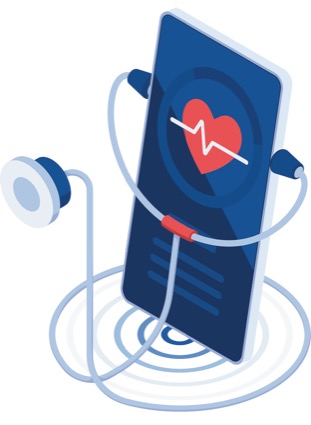The COVID-19 pandemic may have ignited a surge in telemedicine, but one Pennsylvania surgeon has been using communications technology to perform a significant amount of his work remotely for more than 15 years.
It started with one patient making a postoperative visit. “She gave me a hug and said, ‘I’m sorry I have to see you. I just drove an hour to ask four questions. The back of my house abuts one of your rural hospitals; why couldn’t I have been seen there?’ And I said, ‘good question.’”
That was when Andrew Watson, MD, a colorectal surgeon and the senior medical director at Digital Health, UPMC Health Plan, and a professor of surgery at the University of Pennsylvania, in Pittsburgh, began to question the necessity of face-to-face exams. For one thing, a sizeable percentage of Pennsylvania’s population is rural, and his patients often had to drive long distances for an office visit in Pittsburgh.
“We have bridges, rivers, hills, tunnels, traffic, snow and mountains. You want a 70-year-old postoperative patient with a cancer diagnosis to drive on those roads? It’s just not fair to them,” Dr. Watson said.
Telemedicine also helps patients avoid such inconveniences as taking time off work, securing child care, braving bad weather or simply leaving the comfort of home. “When people aren’t well, it’s natural not to want to leave their home,” he said.
From a physician’s perspective, he sees telemedicine as a natural evolution of healthcare in the digital world that helps doctors expand their practice and their reach. Of course, the technology has greatly evolved since Dr. Watson first started seeing patients remotely. In 2006, he used video conferencing carts between hospitals, typically in rural locations. Now Dr. Watson uses a variety of devices—cellphone, computer, broadband, Wi-Fi—for a range of purposes: video visits with new patients and postoperative patients, telerounding inside hospitals from remote locations, and even covering his partner’s patients.
“It’s becoming mainstream medicine,” Dr. Watson noted. “I’ve done rounding and clinics overseas—it really doesn’t matter where I am. While some populations don’t have access to modern communication, many people do have an iPad with a signal, and access to broadband is now fairly ubiquitous.”
Although telemedicine may be a by-product of the modern consumer electronics market, there is an element of it that harks back to an era predating landlines and rotary dials: the house call.
“You learn a tremendous amount about patients when you see them at home on video. You see their surroundings and you meet their pets. Sometimes you can tell when there are problems at home; I’ve had patients smoking on video visits,” Dr. Watson said.
He also has intervened when patients clearly needed emergency services. “We’ve had them stay on the phone while we call the ambulance. Then, when the paramedics came, we were able to explain the problem.”
There are some nuances to telemedicine that set it apart from traditional office visits, Dr. Watson said. “The examination and the workflow are the two big things to learn. The workflow begins with how you room a patient and examine them with somebody else helping you. How do you describe what you’re thinking, and how do you document your findings?”
But these are skills that can be learned, just as surgeons who do open procedures learn laparoscopy, he said. Like it or not, telemedicine will only expand in the years to come, so it behooves physicians to adopt it.
“It’s worth pointing out that the companies behind telemedicine are the largest ones in the world—Apple, Microsoft and Amazon—and they’re not slowing down. This is going to challenge many norms, and it may be uncomfortable, but it’s going to democratize healthcare and the way it’s distributed,” Dr. Watson said.



